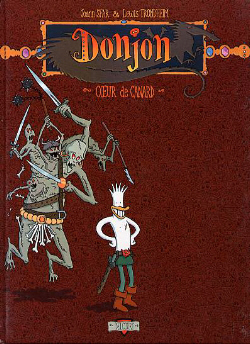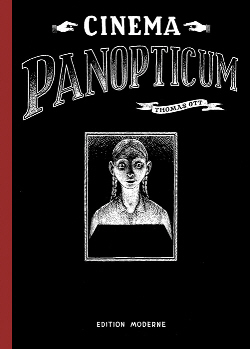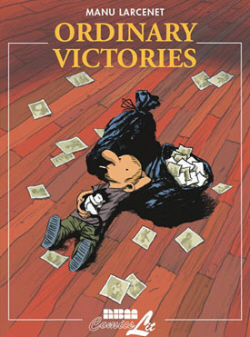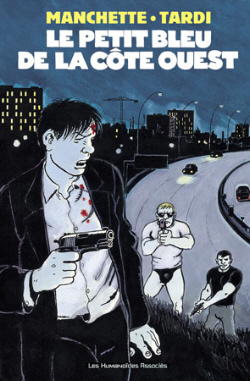European Comics You Should Read
By Patrick Bérubé
March 31, 2009 - 09:07
European comic book have enjoyed what we could call a surge in popularity in recent years. Even if only a fraction of what is published in Europe is translated for the American market many titles are now available. Publishers like NBM and First Second have whole lines dedicated to the genre and even mainstream publishers like Marvel Comics and Devil's Due Publishings are following the trend. Since some of us at The Comic Book Bin are clearly addicted to anything coming from the old continent we thought that we would suggest you what we particularly appreciate.
 |
NBM has also committed an act of pure genius by teaming with the Louvre to publish a series of graphic novels by some enfants terribles of the international comics scene. If your funny bone gets tickled when art snobs get lampooned, then by all means check out these Louvre co-editions. Glacial Period by Nicolas De Crécy and The Museum Vaults: Excerpts from the Journal of an Expert by Marc-Antoine Mathieu have already gone into second and third printings.
Next up in the Louvre co-edition series is Eric Liberge's At Odd Hours, which promises a departure from the parody of the first two instalments. Liberge may dare to suggest that art can change your life.
The series, originally slated to run four volumes, has already expanded to five. And I hope we'll enjoy a few more extensions before it is done. Again, these volumes reward regular re-reads, and are worth their very modest price of US$14.95.
 |
The second recommendation (the surreal) is Cinema Panopticum, a collection of haunting, short stories by Swiss cartoonist Thomas Ott, a master of dark fantasy and horror comix. Fantagraphics Books published an English-language edition a few years ago (104pp, $18.95, ISBN: 978-1-56097-649-3) that reminded me of The Sandman: Endless Nights. In fact, anyone who enjoyed that book will definitely want Cinema Panopticum because Ott is closest in tone to creating the kind of comic book stories Neil Gaiman did.
 |
Visually, their work can often be described as chicken scratches and weak cartoony styles. Much like the Charleroi School from Belgium 40 years ago, their visual style is not realist at all. But unlike the Charleroi School (the Smurfs, Spirou), the cartoony style is used in a realist context with very mature stories.
Looking at Larcenet's Ordinary Victories, we have a dwarf-like character, whose cartoony depiction hides his real age. Yet the story, almost auto-biographical, is filled retrospection and lots of narration by an omni-present narrator. The books of most of the books and artists named above can be found at NBM Publishing or First Second Books in English.
 |
My next suggestion would either be Isaac the Pirate (NBM) or Gus by Christophe Blain (First Second). Blain is still a relative newcomer to the french nouvelle bande-dessinée movement but shows a lot of talent. His minimalist style his dynamic and since he rarely re-draw a panel there is an honesty in his work that I appreciate. Isaac the Pirate won the best comic book (or Album if you prefer...) at Angoulême in 2002. So far NBM has translated two volumes (so four French volumes) of Isaac and First Second has translated the first volume of Gus but I'm sure there is more to come.
Related Articles:
European Comics: An Industry in Despair
Binquirer May 14 2014 - Wayward, European Comics and Gambit Movie
VIZ Media Parent Companies Acquire European Assets
Some European Comics Suitable For kids
America’s Portrayal in European Comic Books
A Guide to European Comic Book Publishers Part 4: Soleil Productions
European Comics You Should Read
A guide to european comic book publishers part 3: l'Association
A Guide To European Comic Book Publishers Part 2: Les Humanoïdes Associés
A Guide To European Comic Book Publishers Part 1: Casterman
